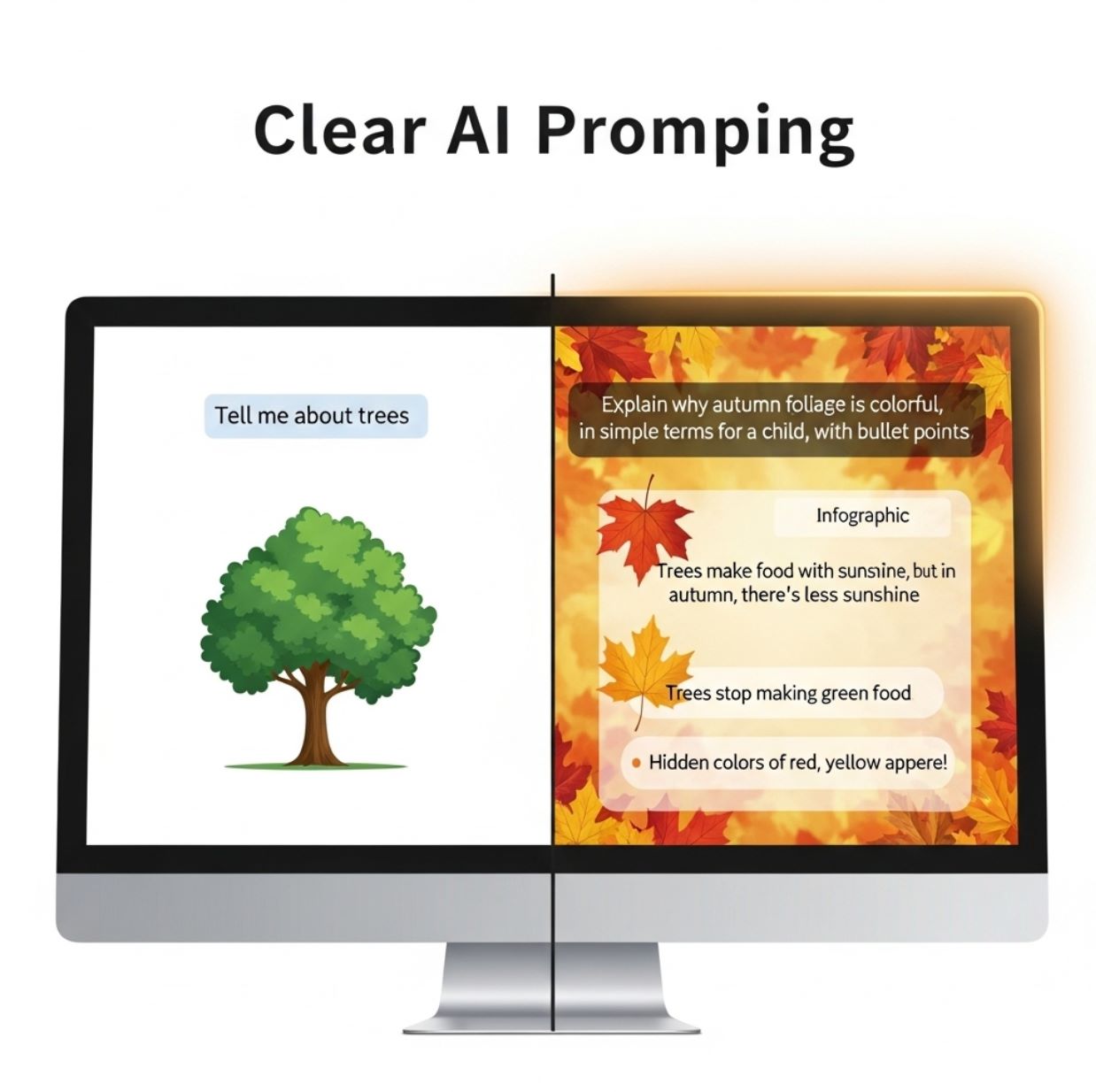Tips for Using AI Effectively for Beginners
Artificial Intelligence (AI) is no longer just for tech experts—it’s becoming an everyday tool that anyone can use. For beginners, learning how to apply AI effectively can boost productivity, spark creativity, and simplify tasks like writing, research, or data analysis. This guide on Tips for Using AI Effectively for Beginners highlights practical strategies, common mistakes to avoid, and easy ways to get started, so you can unlock the true potential of AI in your daily life.
The article below will reveal to you effective AI usage tips for beginners. Let's pocket them right away with INVIAI!
Artificial intelligence (AI) can do amazing things – writing drafts, summarizing articles, even generating images – but it still needs clear guidance from you.
AI literacy – knowing what AI can (and can't) do – is key to using it safely and effectively. AI models are essentially advanced pattern-matching tools, not sources of absolute truth.
— AI Experts
Before diving in, understand AI's strengths and limits: think of AI as a helpful assistant that requires good questions and input.
Start Small with Beginner-Friendly Tools
Begin by experimenting with free AI tools to see how they work. For example, try a chatbot like ChatGPT or Google's Gemini to help draft an email or answer a question, and an image AI like DALL·E or Canva's AI to create a quick visual.
Tools like these make AI hands-on. NMSU recommends "playing around with free, beginner-friendly tools" to learn by doing.
At first, focus on simple tasks (such as writing a short paragraph or summarizing a page) and see how the AI responds. As one beginner guide notes, these tools let you "feed your curiosity" in a low-pressure way.
Experiment with One Tool
Pick one AI app and try a simple prompt (e.g. "Write a 200‑word thank-you note to a teacher"). As you get comfortable, try different tasks or more complex queries.
- Start with simple prompts
- Gradually increase complexity
- Learn through practice
Automate Tedious Tasks
AI is great at boring or repetitive work. Let AI transcribe meeting notes, organize to-do lists, or sort through emails.
- Meeting transcription
- Task organization
- Email sorting
Use AI-Powered Apps
Many everyday apps have AI helpers. Writing assistants like Grammarly, voice assistants (Siri, Alexa), and Google Lens are safe ways to practice.
- Writing assistants
- Voice assistants
- Image recognition

Give Clear, Detailed Prompts
The key to effective AI use is in your prompts – the instructions you give the AI. Always be as clear and specific as possible. Write prompts like you're "programming with words". As Google notes, clear, specific instructions (called prompts) make AI much more productive.
Poor Example
"Tell me about trees"
- Too general
- Unclear purpose
- No context
Better Example
"Explain why autumn foliage is colorful, in simple terms for a child"
- Specific topic
- Clear audience
- Defined purpose
Provide Context or Role
Specify Format and Length
Use the CAP Method

Iterate and Ask Good Questions
Think of using AI as a conversation. You don't just ask one question and walk away – you iterate. Start with a broad prompt, then ask follow-up questions to dig deeper.
For example, after getting an initial draft from the AI, you might ask it to clarify one point, provide examples, or expand on a section. Effective AI use "requires an iterative approach".
Start Broad
Begin with a general prompt to get initial output from the AI.
Analyze Results
Review the AI's response and identify areas that need clarification or expansion.
Ask Follow-ups
Use specific follow-up questions to dig deeper into particular points.
Refine Output
Continue iterating until you get the desired result.
Success with generative AI will demand that we learn how to ask and provide thoughtful and accurate questions and instructions.
— World Economic Forum
Poor Approach
"Talk about AI in schools"
- Too broad
- No specific focus
- Unclear expectations
Better Approach
"What are 3 challenges of using AI in education, and how can a teacher address them?"
- Specific number requested
- Clear focus area
- Actionable solutions sought

Think of AI as a Collaborator, Not a Replacement
AI works best when you use it as a teammate. Instead of treating AI like a search box, use it like an extra pair of hands or a brainstorming partner.
Research shows that AI can expand your perspective by offering new ideas. For example, AI might suggest an angle or example you hadn't thought of.
What AI Does Best
Let AI handle tasks it excels at to maximize efficiency.
- Generating draft ideas
- Crunching data
- Pattern recognition
- Repetitive tasks
What Humans Do Best
Focus on uniquely human capabilities that add real value.
- Critical thinking
- Creative storytelling
- Empathy and emotion
- Strategic decision-making
By "engaging [AI] as a relevant collaborator by contributing inputs", you combine the machine's speed with your own creativity and judgment.

Verify Outputs and Watch for Bias
Always treat AI output as provisional. AI can "produce convincing but misleading information," so you should double-check everything before trusting it.
Verify Facts and Data
Watch for Bias
- Cross-reference factual claims with reliable sources
- Question outputs that seem biased or stereotypical
- Rephrase prompts if results seem off
- Consult multiple sources for important decisions
- Remember AI can make convincing-sounding mistakes

Protect Your Privacy and Data
Before you use any AI service, check its privacy terms. Never feed AI tools personal or sensitive information (like Social Security numbers, health details, or confidential work data).
Check Privacy Terms
Review privacy policies before using AI services
Use Reputable Tools
Stick to well-known, trusted AI platforms
Disable Data Sharing
Turn off training features when available
- Never input Social Security numbers or personal IDs
- Avoid sharing health details or medical information
- Don't upload confidential work documents
- Redact identifying information when in doubt
- Use privacy settings to disable data training
In summary: Protect what you input into AI. Don't upload private documents or paste secret passwords. When in doubt, redact any identifying info. By being cautious, you keep your data safe and your work compliant with privacy rules.

Keep Learning and Stay Curious
AI is evolving fast, so keep exploring. Join AI communities (forums, social media groups) and watch for tutorials or webinars. One beginner guide advises to "stay curious" – learn about new tools and updates as they appear.
Join AI Communities
Connect with other learners and experts to stay updated.
- Online forums and discussions
- Social media groups
- Webinars and tutorials
- Professional networks
Learn Field-Specific Applications
Discover how AI applies to your specific industry or interests.
- AI in education
- AI in marketing
- AI in healthcare
- AI in creative fields
For example, you might discover a new feature in an app or a free tool for language or coding tasks.
Research how AI is evolving in your field to imagine ways it could improve your workflow.
— NMSU AI Guide
By doing this, you'll become more confident and find more ways AI can save you time and creativity.

Key Takeaways
- Start small with beginner-friendly free tools
- Write clear, detailed prompts with context
- Iterate and refine through conversation
- Use AI as a collaborator, not replacement
- Always verify outputs and watch for bias
- Protect your privacy and sensitive data
- Keep learning and stay curious about new developments
With practice and caution, AI can become a powerful ally. Dive in, experiment, and enjoy how AI can boost your productivity and creativity!






